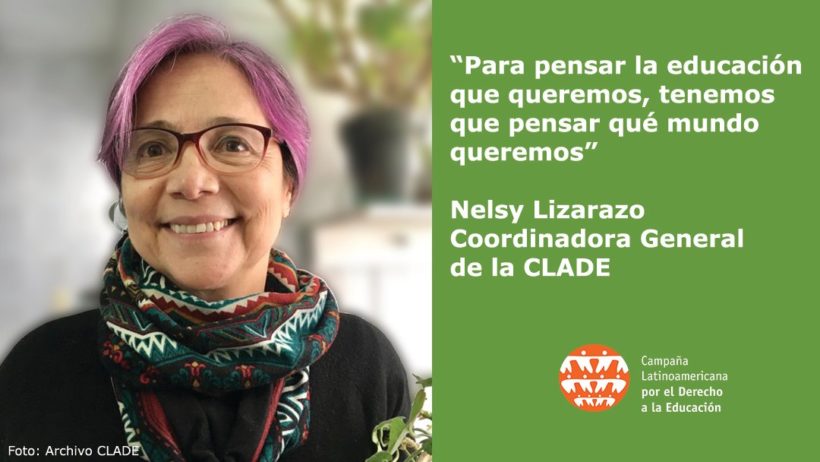During the UNESCO sub-regional consultation for CONFINTEA VII, representatives of organisations such as CLADE, CEAAL and DVV presented their analyses of the context of Y&AE in Latin America and the Caribbean and the challenges for guaranteeing this educational modality as a human right.
Rethinking literacy from a place of greater complexity, scope and relevance for the current times and the needs of the most vulnerable groups; abandoning, definitively, all assistance and remedial approach to Youth and Adult Education (Y&AE) and ensuring flexible Y&AE offers, working in an intersectoral perspective and territorial articulation. These were some of the recommendations made by Nelsy Lizarazo, coordinator of the Latin American Campaign for the Right to Education (CLADE), during the first day (28/7) of the Sub-regional Consultation in Latin America on the Road to CONFINTEA VII, organised by UNESCO. The event brought together representatives of Latin American and Caribbean States and civil society organisations, including CLADE, the Institute for International Cooperation of the German Adult Education Association (DVV) International and the Latin American Council for Popular Education (CEAAL).
The first day of the Consultation, which is part of the preparatory process for CONFINTEA VII, revolved around debates and reflections on new understandings of Y&AE in the light of the CONFINTEA VI agreements. It also addressed the place of literacy from a lifelong learning approach, the challenges and responses generated in the context of the pandemic from Y&AE and its relationship with the achievement of the goals of the 2030 Agenda. Other topics emphasised were post-pandemic recovery and overcoming inequalities, attention to diversity, intersectorality and its relationship with the integral formation of people.
According to Nelsy Lizarazo, there is still much to be done for Y&AE to be guaranteed as a human right and one of the pending challenges is that this educational modality “continues to occupy a very secondary place in the agendas of the States: there is institutional fragmentation, funding is marginal, the offers are limited, there is a lack of knowledge of the subjects of rights, with notable exceptions in some public education systems and, above all, with exceptions that come from the place of non-formal, community and popular education”.
For Eva König, DVV’s regional director for South America, it is necessary to promote a “new understanding of Y&AE”. She says that there has been progress in guaranteeing Y&AE as a human right, but that in terms of participation, Y&AE remains invisible. “There is a lack of focus on learning. Youth and adult education is still not understood as a holistic component”.
The regional director of the DVV also emphasised the importance of Y&AE for the guarantee of other human rights. “The future is marked by the strong impact of the pandemic and the challenges must be treated as a vision for the future. Investing in Y&AE requires investing in the matrices and lifelong learning has a central value. Y&AE cuts across and contributes to all the SDGs [Sustainable Development Goals]: health, environment, economic development, participation, etc.”.
Noel Aguirre, from CEAAL, defends Y&AE linked to the productive potential of the regions. “Not only in terms of ‘manual’, but also in terms of intellectual work. Y&AE is important for rethinking development models in our countries, as well as the relationship with science and technology”.
For him, the social value of Y&AE for life and the achievement of the SDGs is unknown. “At best, priority is given to formal Y&AE and the richness and contributions of non-formal Y&AE are ignored. Much work remains to be done on its coverage, quality, cultural relevance and social relevance, and it is necessary to develop its institutional framework with its own identity and sufficient funding”.x
As a result of the pandemic, Noel Aguirre explains that Y&AE was affected like all education systems in Latin American and Caribbean countries. “For example, [Y&AE] was impacted by the suspension of face-to-face classes (160 million students) and the inequality manifested by the digital divide: access to the internet, digital devices and platforms, as well as their pedagogical use”.










